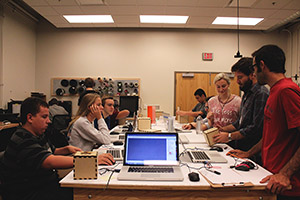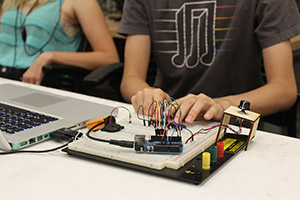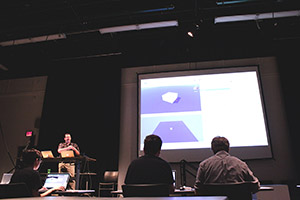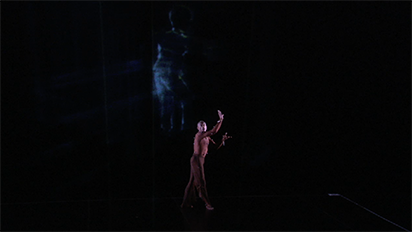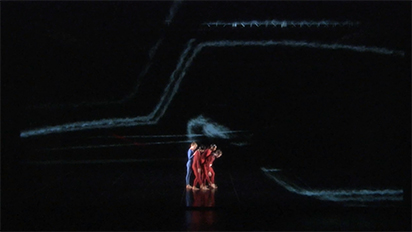Critviz
Critviz is a web application I created with David Tinapple. We made Critviz based on our own desire to include critiscm and peer evaluation in our Digital Culture classes, despite the growing enrollment.
Digital Culture Summer Institute
Young adults are immersed in digital culture, but most are not familiar with the computational thinking behind the latest tools and technologies. There are few opportunities in K12 curricula for students to learn such practices, but we believe that skills such as computational thinking, creative coding, collaboration, innovation, and information literacy can be taught in a highly effective manner by using aesthetic challenges as a motivation. In other words, by engaging students in creative digital arts projects they are naturally driven to acquire many new skills that are simply required by the digital tools in order to achieve their aesthetic goals. We are working to create a project based digital arts curriculum through which novice middle/high school students are intrinsically motivated to learn and apply STEM skills and computational thinking.
Past work
Digital Culture Course Planner
The Digital Culture program launched using an innovative proficiency system to allow students to customize their curriculum. The Course Planner was a web application that allowed students to experiment with different sequences of courses, and understand the proficiency outcomes.
Eval
Eval is a web application used to track collaboration in research and education at AME. http://eval.ame.asu.edu
Mixed Reality Rehabilitation
Our team has developed an adaptive, mixed reality rehabilitation (AMMR) system to train reaching and grasping movements of stroke survivors. Mixed reality therapy, combining training in virtual and physical environments, was developed to connect virtual learning to physical reality, and thus better facilitate the transfer of strategies from therapy to activities of daily living. The AMRR system integrates rehabilitation and motor learning theories with high-resolution motion capture and sensing technologies, smart physical objects, and interactive computer graphics and sound.
motione
Internationally acclaimed dance choreographers Trisha Brown and Bill T. Jones have collaborated with visual artists Paul Kaiser, Shelley Eshkar and MIT Media Lab’s Marc Downie; composers Curtis Bahn and Pulitzer Prize-winner Roger Reynolds; lighting designer Robert Wierzel and ASU artists and engineers to create two ground-breaking pieces that bridge the gap between technological experimentation and physical reality, using computer driven motion analysis and interactive systems. This is the first time that this complex technology has been applied, in real time, to choreography. The world premiere presentation took place at Arizona State University’s Galvin Playhouse on Saturday, April 9, 2005.
The Trisha Brown work was performed at Lincoln Center April 14 & 16, 2005.
motione was performed at the Monaco Dance Forum December 13, 2006.
A Monaco, la danse a dompté les nouvelles technologies
Trisha Brown’s Dance With Electrons Arrives at Lincoln Center
__
